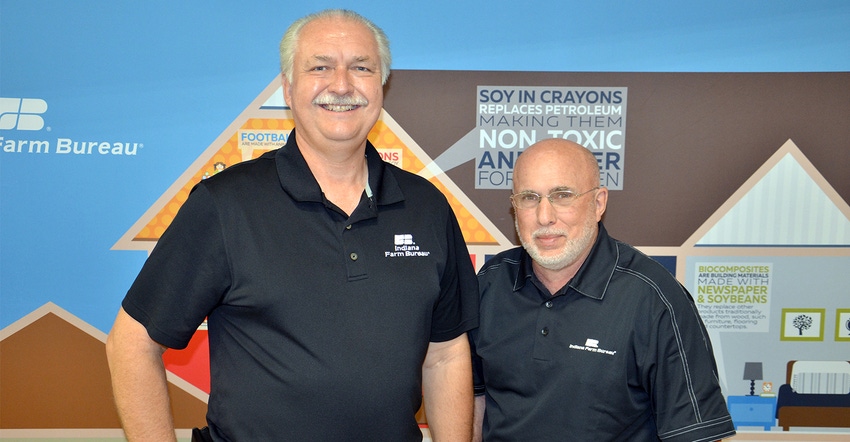
As a farmer, if you think it’s important to tell your story to consumers, you’re not alone. Indiana Farm Bureau heard that message loud and clear when conducting listening sessions with members.
There were 20 meetings held around the state, notes Bob White, IFB’s director of national government relations. IFB members were asked to explain their key concerns.
“There was only one topic that members brought up at each meeting,” White says. “The need for more education for the public and concerns about how to achieve it came up every time.”
Indiana Farm Bureau has assisted members in various counties in carrying out “Farming in the Classroom” programs for elementary-age children. Those efforts are highly successful, White says. They will continue.
Randy Kron, president of IFB, adds, “That’s not what we’re talking about here. Members told us they were concerned about telling their story to adults. That’s where they feel they need help in understanding what they can do to reach consumers with an accurate message about agriculture.”
GMOs and more
There’s a reason why telling ag’s story correctly came up at every meeting, Kron says. This challenge is now one of the six key pillars in IFB’s strategic plan.
A big factor driving discussion at each listening session was misunderstandings about GMOs, White notes. Farmers everywhere seem to field questions from consumers about GMOs. Often consumers already have a preconceived notion before they talk to farmers, he adds. Influenced by the internet and social media stories, many are convinced that GMOs are bad for the food supply.
Marshall Martin, currently an interim associate dean in Purdue University’s College of Agriculture, says high-oleic soybean oil for preparing foods is a positive story farmers can use when talking about GMOs.
“We finally have a trait which is positive for consumers and not just focused on helping farmers fight off weeds and insects,” he says. “I think this achievement is a bigger story and deserves more attention than it has received so far.”
Two companies, DuPont Pioneer and Monsanto, have soybean varieties on the market that contain higher quantities of oleic acid than conventional soybeans. The products produced from these beans are Plenish and Vistive Gold, respectfully. Martin says they’re healthier because they aren’t hydrogenated.
Tell the story
Farmers in Indiana and across the U.S. have done an excellent job of learning how to produce corn and soybeans, Kron says. “We haven’t done nearly as well at telling our story,” he adds.
The GMO issue is certainly one where agriculture and farmers need to do a better job of telling the story, Kron continues. One major problem is that consumers don’t have a clear, unbiased understanding of GMOs.
While not ready to unveil specifics, Kron and White both say IFB at the state level is hard at work, preparing for ways to help farmer-members in their quest to reach consumers. No doubt GMOs will be an issue IFB will help farmers address.
About the Author(s)
You May Also Like




